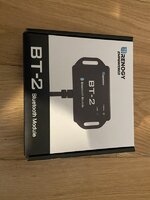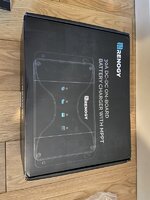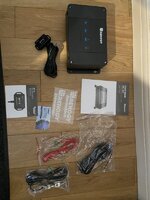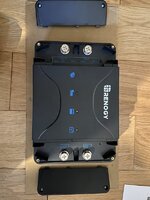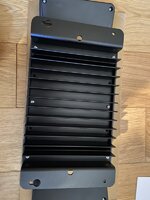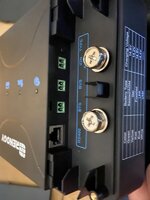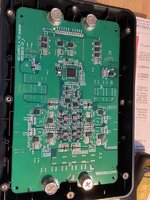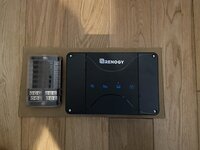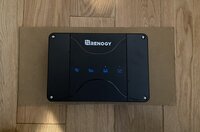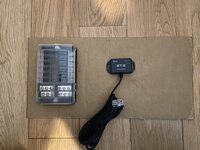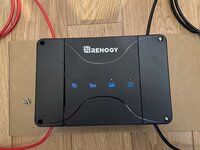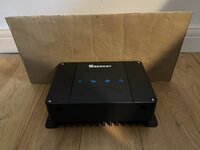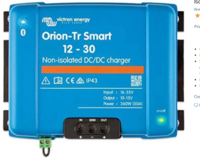here are some current real-world test results . . . (DEC 2020)
the van has been sat parked for over a week . . so battery wise, not great . . down to 11.9v ish
I grabbed the Victron 12v/15a/1op charger and plugged it into the starter battery hook in point.
View attachment 96764
.
this is the current setup under the bench . . . the 50A Renogy DC-DC / mppt. (the AUX battery is under the drivers seat, an AGM Xtreme 110ah)
View attachment 96765
.
you can see the charger starts up delivering 15A current but rapidly drops and settles at around 10A (@ 14.2v) . . .
View attachment 96766
which starts charging the starter battery . . .
View attachment 96767
....
BUT . . .
because the starter battery voltage rises . . . the Renogy auto VSR kicks in and starts charging the AUX battery . .
which can bee see here in the BMV . . . at 7.4A (( this is the charge current from the starter battery via the DC-DC to the AUX battery))
View attachment 96768
***************
so we are delivering 9.8A from the EHU charger to the starter battery . . .
but 7.4A is going via the DC-DC to the AUX battery.. . . .
if charging the starter was the main concern you can see that the charge power is being split . . . so the starter is not getting the full charge . .
This will carry on until the AUX battery is almost charged (top of absorb cycle) and it starts to draw less current . . . at which point the starter will start to benefit from the full charge power.
**************
This is the BM2 readout from the AUX battery . .
View attachment 96769View attachment 96770
***********
up close on the Renogy you can see the status lights showing ALT power available . . . and charging the AUX battery . . .
View attachment 96771
so you can see that the single charger method works . . . . . but if you have twin low batteries and are drawing a 12v load from your leisure electricals . . . . . dont expect the charger to charge up the starter battery very fast . . . but this works well as a maintainer style charging system.
EDIT:
half-hour later the EHU Victron charger has moved over to float mode . . .
View attachment 96776View attachment 96777
which has dropped the output volts to 13.6 @ 5.7A . . .
View attachment 96779
you can see the drop on the starter BM2 readout.
View attachment 96781View attachment 96782
BUT the BMV shows that the AUX battery is still being charged via the DC-DC . . . ( @ 3.8A )
View attachment 96784
which can be seen here on the AUX BM2 readout . . .
View attachment 96785
(additional carriage returns removed to protect the environment)
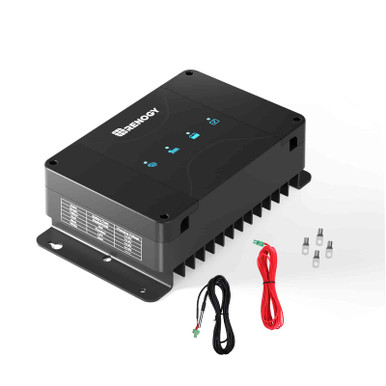
 uk.renogy.com
uk.renogy.com


 uk.renogy.com
uk.renogy.com

